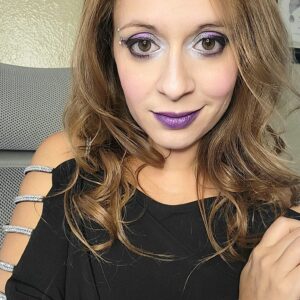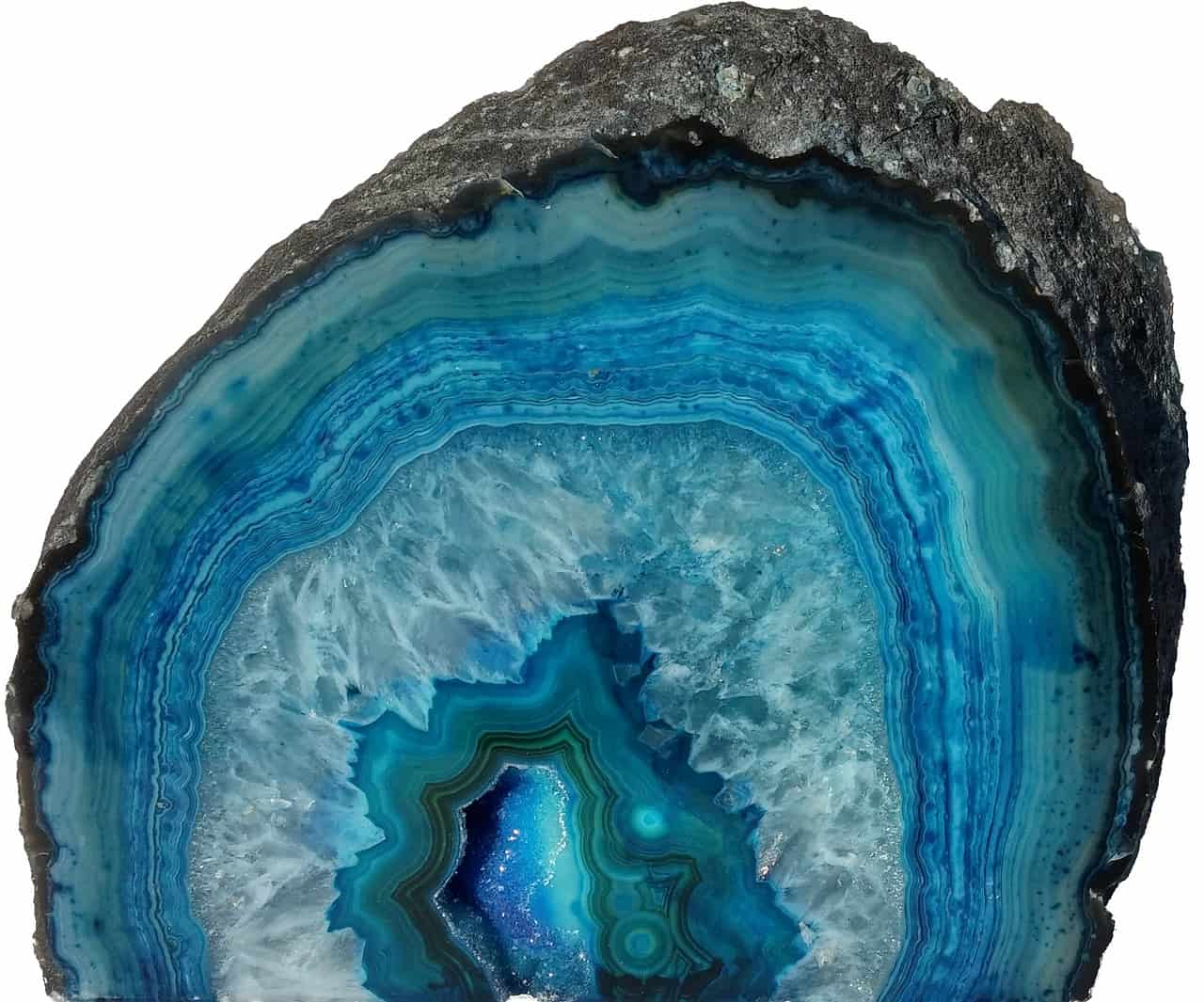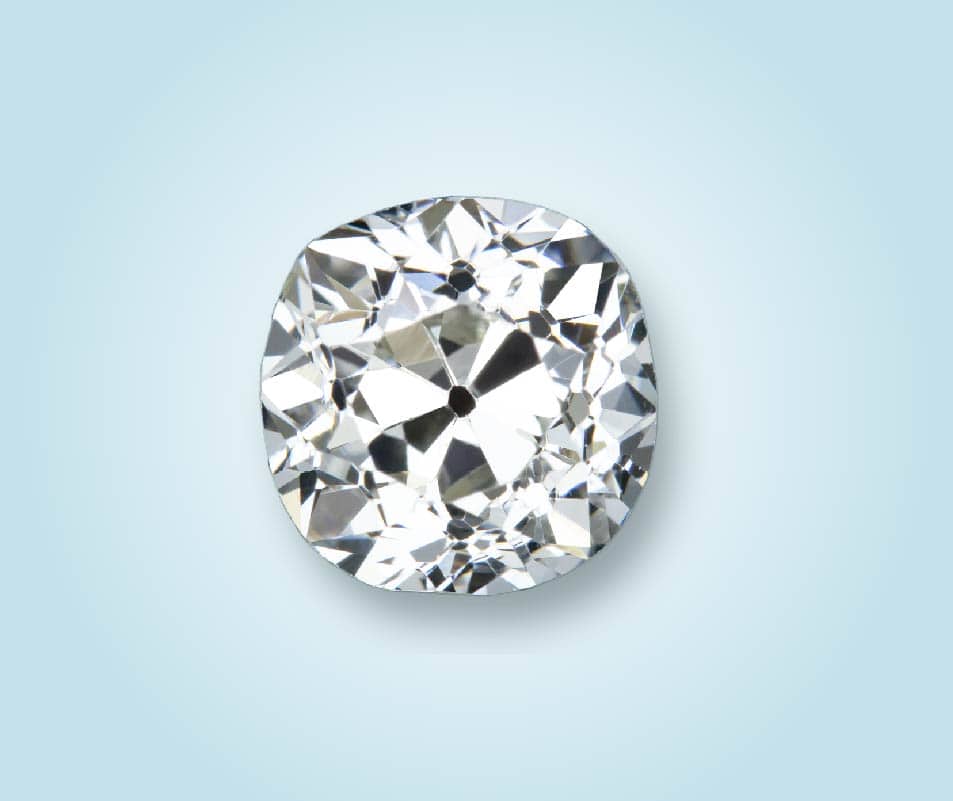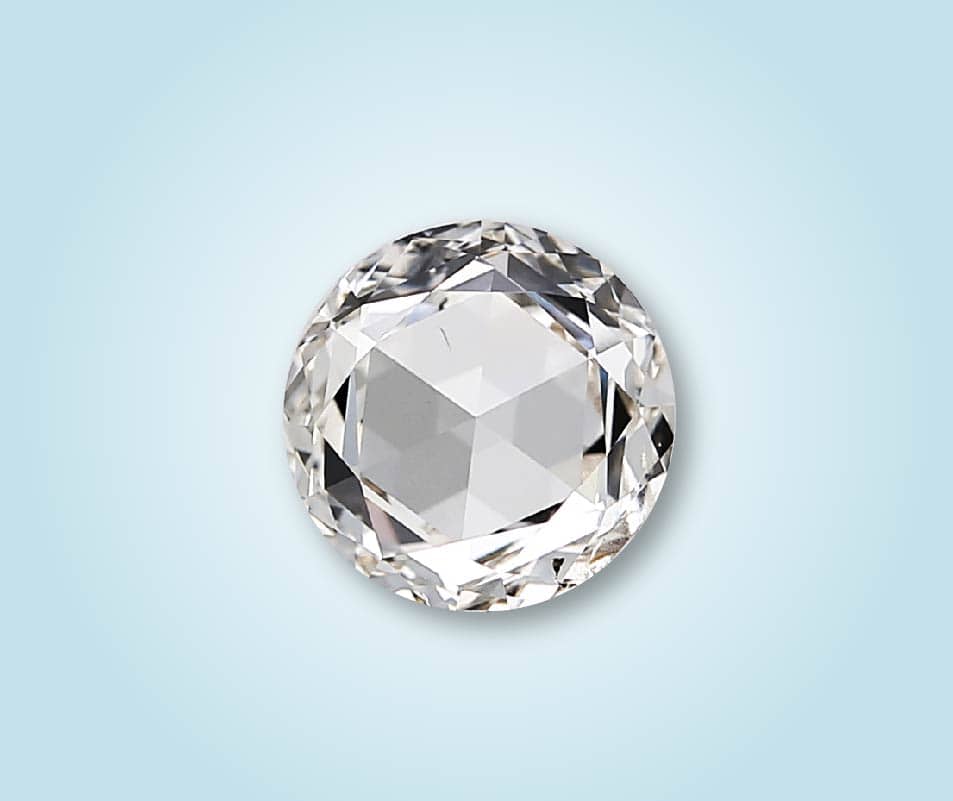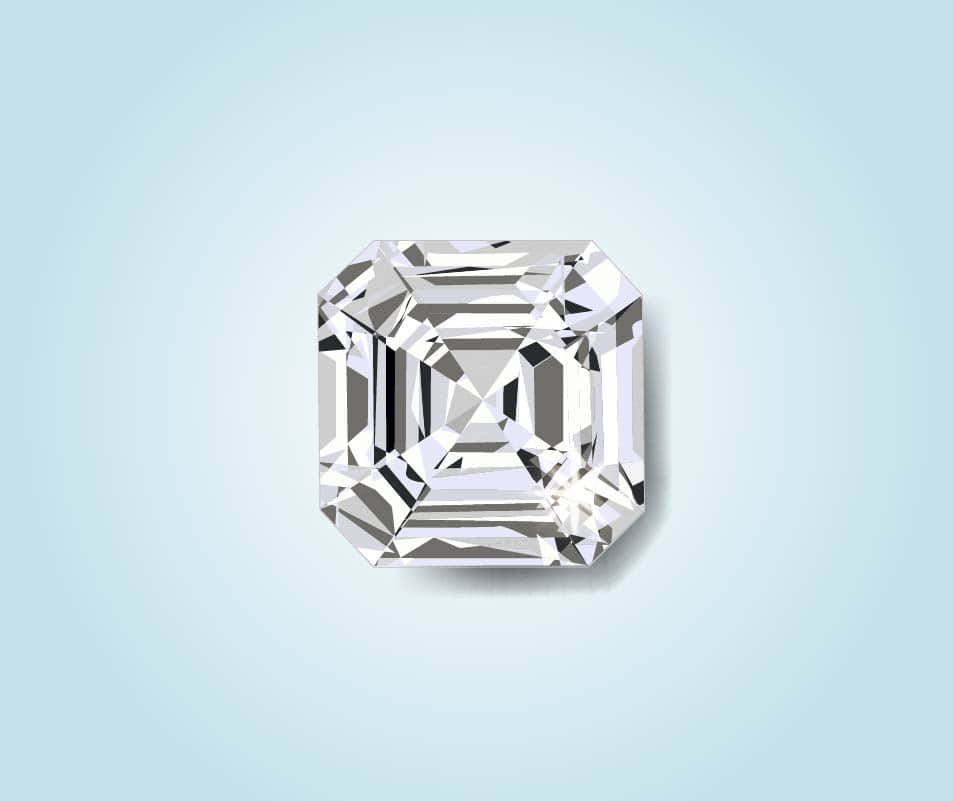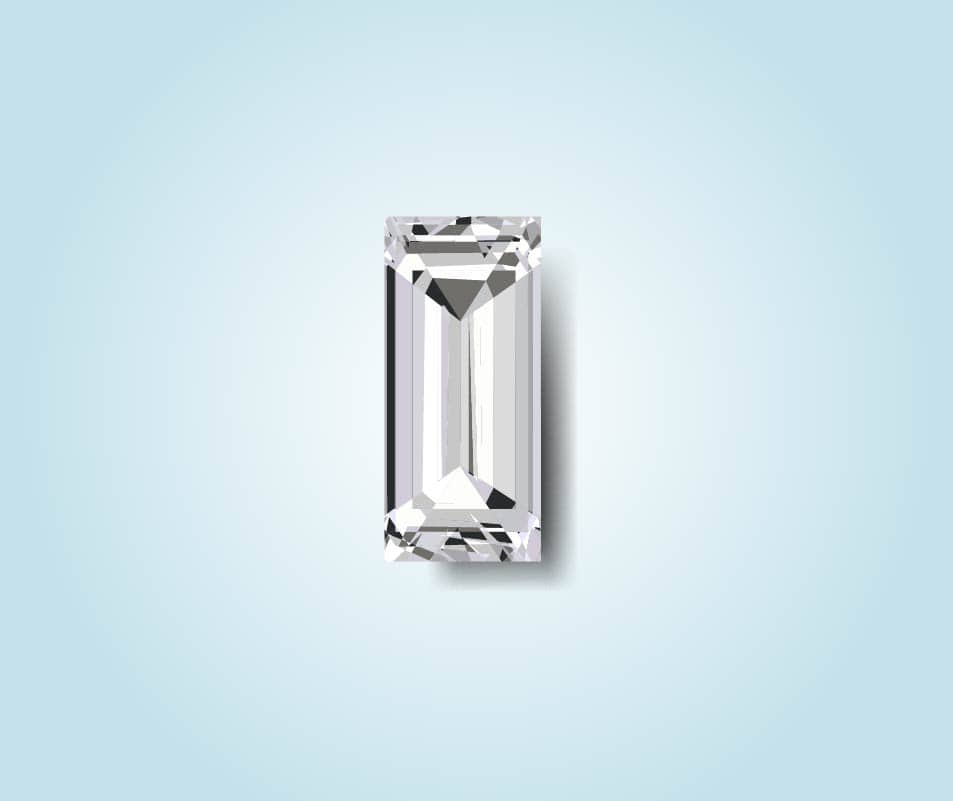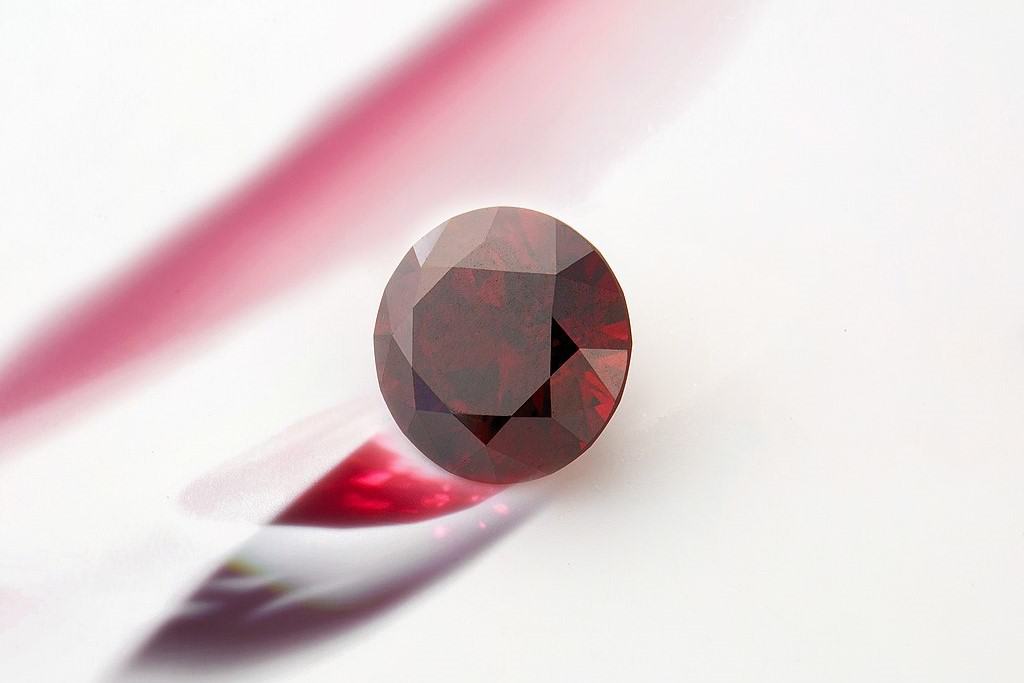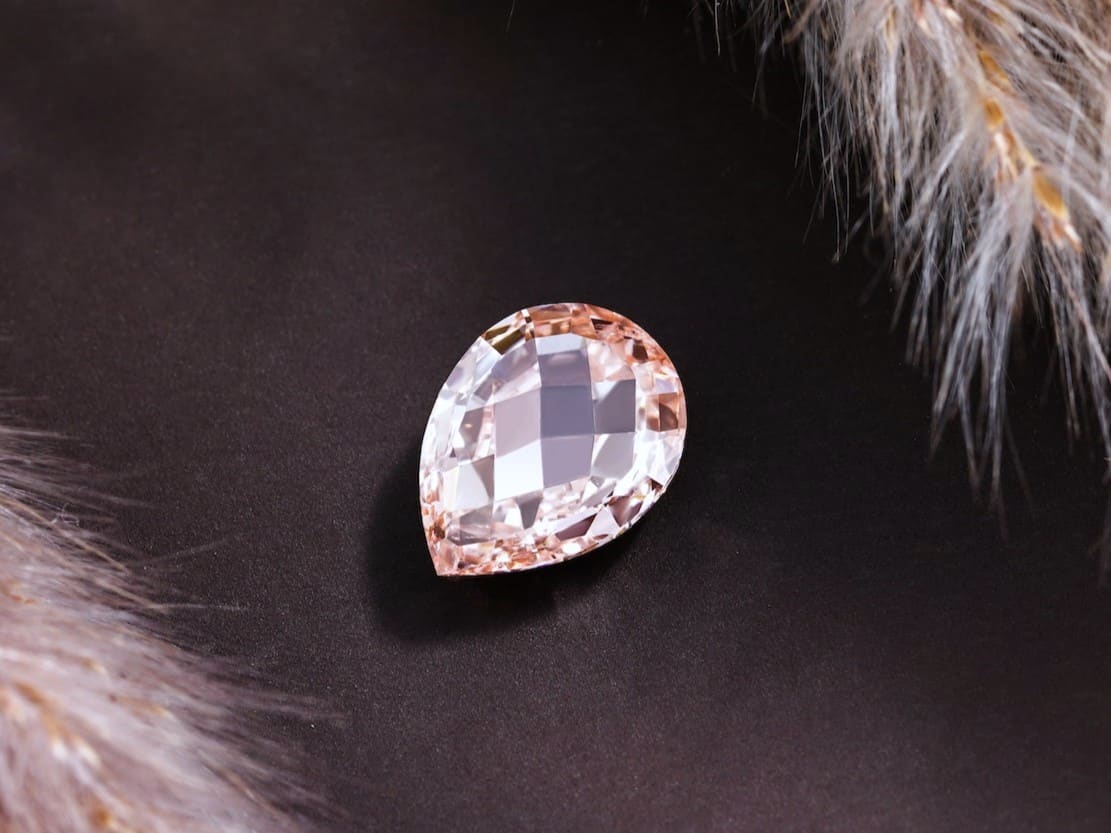How can you tell if your diamond is real or fake?
That's the topic of today's guide. Specifically you'll learn:
- 10 different easy (and fast) tests to check if your diamond is real
- The #1 best fake diamond test
- What to look out for during these tests
- And much more

So how can you tell if a diamond is real or fake?
Unfortunately, there are a lot of natural and synthetic gemstones that look like diamonds but they aren't actually diamonds.
For example, moissanite, white sapphire, white topaz, white zircon, cubic zirconia, and even glass can be cut to look like diamonds.
If you're not careful, you could be spending 1,000's of dollars on diamond shaped glass!
Crazy right?
These are called diamond simulants or imitation diamonds. These stones are marketed as their own stone as alternative diamonds.
In some cases, jewelry stores have been seen to advertised these gemstones as natural diamonds when they aren't. While not a common practice, it can happen to anyone. And not everyone is a gemologist. Fortunately, there are a number of ways to tell if a diamond is real.
Some of these tests should be performed by a local jeweler, others you might need supplies for, and others are super simple and don't need anything other than what's around you.
Test Your Diamond With the Scratch Test
Supplies you'll need for this diamond test:
- Mirror or sandpaper
The scratch test used to be the primary method to determine if you stone is a real diamond. This process involved taking a loose colorless stone and scratching it against a mirror.
If the stone scratches, then it isn't a diamond. Others might run the stone against sandpaper instead. Diamonds are incredibly difficult to scratch and it's the most scratch proof stone in the world.
The Mohs scale tells us how hard, or scratch proof, a mineral is. Diamonds sit at a 10 on the Mohs scale, which is the highest hardness possible.
Is this test reliable?
Although this is a pretty good check to see if a diamond is real or not, there are other diamond substitutes that can pass this test. Moissanite hits a 9.5 on the hardness scale. White sapphire (or all sapphires) are rated a 9.
If you were to perform the scratch test with these two stones, they'd be very difficult to scratch. This is why the scratch test isn't reliable anymore. But never fear, there are many more tests to make sure you're not paying for a fake diamond.
Read Also >> Where's the top place to buy Moissanite rings online?
Check If Your Diamond Is Fake With the Fog Test
Supplies you'll need for this diamond test:
- Your breath
- Tweezers (optional)
You can do the fog test at home with a mounted or unmounted stone. If you're using a loose stone, make sure you're doing this test somewhere you can easily recover the stone if it slips between your fingers.
Line your bathroom sink with a solid colored towel. So, if you drop it, you it doesn't bounce into another area and your drain is completely covered.
For this test, all you need is pretty good eyesight and your own breath. The fog test is one of the oldest techniques and is still used today. It's not completely foolproof though and results can be misinterpreted.
You can either use your fingers or tweezers if you have them to hold the stone if it's easier. You should be able to clearly see the top side, also known as the table of the stone. Gently breathe onto the stone as if you were trying to fog up a window.
Genuine diamonds don't retain heat very well, so it should be difficult to fog it up. If it's a real diamond, it'll fog and quickly disappear. If it takes more than a couple seconds to clear the fog, then it's most likely a fake diamond.
Is this test reliable?
There are some possibilities that might contest the results of your experiment. There isn't a set timeframe on how long it takes for a diamond's fog to dissipate.
Also, temperature and humidity can also mess with how long or short the fog stays on the stone, so this test shouldn't be a confirmation based on itself.
The Newspaper / Dot Test to Find Fake Diamonds
Supplies you'll need for this diamond test:
- Newspaper/Paper
- Pen
While originally done with a newspaper, you can perform this test with just a plain piece of paper. Place your questionable stone on top of the print of an article, not from a picture or ad.
If you can see the lettering through the stone, it's probably not a diamond. Diamonds have high brilliance, so you shouldn't see text through it.
If you're using a plain piece of paper, take a pen or sharpie and make a small dot on it. Place the diamond over the dot with the table side down. If all you can see is sparkle and not the dot, you might have a real diamond on your hands.
This is especially helpful when distinguishing cubic zirconia from a diamond because CZ are very transparent. Moissanite is also transparent.
Is this test reliable?
The newspaper test isn't the most reliable method of sorting a true diamond from the fakes. The test is only meant for larger stones. Stones under a 1/2 carat may be difficult to see anything though.
Read Also >> How to buy a half carat diamond ring?
Check If a Diamond Is Real With the Water Test
Supplies you'll need:
- Glass
- Water
The water test is a simple test to perform, but it only works if you have a loose stone. Mounted diamonds or supposed diamonds can't be subjected to this test. All you need is a tall drinking glass. Be very careful when handling loose stones as they can be very easy to drop.
Fill your drinking glass a little over half full, about 3/4 the way. Carefully drop your diamond into the glass of water. It is sinks to the bottom, it's a real diamond. If it's a fake stone or other gemstone, it'll float.
It might even hang around just under the surface of the water, but it still isn't a diamond. Diamonds have high density, so when they're dropped in the water, the weight of the density pulls it down to the bottom.
Is this test reliable?
You shouldn't take the results of the water test as confirmation alone if the stone sinks. Both moissanite and cubic zirconia will sink quickly too because they also have higher densities.
The density isn't as high as a genuine diamond, but it will still sink. The water test helps sort out diamond fakes like quartz, crystal, or glass.
Check If a Diamond Is Real With the Thermal Conductivity Test
Supplies you'll need:
- Diamond tester
- Tweezer for loose stone
The dreaded diamond tester. If you've haven't heard the horror stories, buckle up buttercup. Diamond testers are a handheld device similar to a large pen. The tip of the diamond tester uses thermal conductivity to determine if a stone is a real diamond or a fake.
You can use a loose diamond or a mounted one, though it's easier if already mounted in an engagement ring. You should hold the tip against the stone gently for about 30 seconds.
The complexity of a diamond tester may range. Some may light up only when recognizing the stone as a diamond. Others may have a moissanite light. They can't tell you if your mystery stone is a cubic zirconia or other diamond substitute; it just won't light up.
Is this test reliable?
In theory diamond testers are the most reliable, but you have to use them right. If you've ever heard the horror stories of diamonds not testing real at places like Zales and Kay, you might be a little worried.
Diamond testers are fickle. If the stone is dirty, it won't test correctly. A genuine diamond can fail the tester. This can happen if pressed too hard or for too short of time. Make sure the tip is resting flat in the middle of the stone. Angles can also contribute a bad reading.
Using a Jeweler's Loupe to Check If a Diamond Is Real
Supplies you'll need:
- Jewelers loupe
- Can be done at home or by a jeweler
The magnification test is fairly simple, but you'll need some tools first if you're choosing to do this at home. You can always go to a jeweler or jewelry store and have them look at it. You also purchase a fairly cheap jewelers loupe online at Amazon. This one comes with a UV light as well, so you can also perform the UV test.
Diamonds should have natural inclusions under magnification, unless you've paid a very high price for a VVS, IF, or flawless diamond. Flawless, IF and VVS diamond clarity are going to have very little inclusions under magnification. If you're looking through one of these tools, you should be able to see inclusions appropriate for its clarity grade.
Remember, there's no such thing as a cheap flawless diamond. Stones like cubic zirconia and moissanite will look a little too perfect. Moissanite can have inclusions, but they're generally flawless.
Is this diamond test reliable?
As long as you're using a loupe with at least 10x magnification, you shouldn't have a problem distinguishing the inclusions. In fact, you can do this with a magnifying glass as long as it's 10x magnification.
However, if you've paid high dollar for a diamond grade that's more difficult to find inclusions even under magnification, you might try some more tests.
This method is better for those who've already purchased the stone. If you're someone who found a colorless stone and wants to see if it's a diamond, the test may not be so reliable.
White sapphire can have inclusions, but they're usually wispy, like a feather inclusions.
Read Also >> Is diamond clarity important when buying a ring?
Using UV Light to Test If a Diamond is Real or Fake
Supplies you'll need:
- Any type of UV light or black light bulb
This test involves a childhood favorite, the black light. Make sure you're using a genuine black light, because there are many cheap fakes online.
You should set your stone or engagement ring on a black background. The best option for an engagement ring would be its box so you have a great face-up view.
Shine the black light onto the stone. If your stone glows blue, it's a diamond. Diamonds may glow blue because of something the gemology world calls fluorescence.
You also might recognize this term from diamond grading reports or descriptions online. You'll usually see fluorescence listed in the same area as polish and symmetry.
Is this diamond test reliable?
If the stone glows blue, it's a diamond. But if it doesn't glow blue, don't count it out.
Diamond fluorescence is listed as Very Strong, Strong, Faint, or None. So, if your stone doesn't have any kind of bluish glow, it could still be a diamond.
If this is the case, or it glows a different color, you should take it to a jeweler to confirm or trying another at home test.
Using a Candle or Lighter to Test If Your Diamond is Real
This test is another method where heat is used to determine if the mystery stone is a genuine diamond. You'll need a few things with this test: a lighter or a candle flame, tweezers to hold the stone with, and a glass of very cold water.
Make sure to exercise caution while performing this test. Only perform this test with a loose stone. Never bring heat to a mounted diamond.
Holding the stone in question with your tweezers, bring the lighter flame close to it, or bring your stone near the candle.
Keep it there for around 30 seconds. Since real diamonds are resistant to heat, there shouldn't be any reaction. Diamond imitations will shatter.
Keep in mind that if your stone does survive the heat, it will be pretty dirty. You should soak it in a mixture of toothpaste and water for about 5 minutes. Then use a toothbrush to brush away the ash residue.
Is this diamond test reliable?
This test is pretty reliable, but not 100%.
While most diamond imitations aren't resistant to heat, moissanite and zircon are both highly resistant.
Cubic zirconia and white sapphire will shatter. White topaz will actually change color with a jewelers torch.
Using The "Sparkle Test" To Check If Your Diamond Is Real or Fake
Everybody knows that diamonds sparkle. But did you know you can tell if you have an authentic diamond based on the sparkle? You'll need good eyesight for this one.
Hold the stone under the lamp and observe the brilliance. Diamonds are renown for their balanced mixture of white light and rainbow light that compliment each other. In other diamond fakes like cubic zirconia and moissanite, you'll be overwhelmed with the rainbow light emitting from the stone.
If you stone's brilliance seems overly flashy or pretty dull, it's probably a fake. Even a poorly cut diamond will have exceptional sparkle next to a white sapphire or white topaz.
Is this diamond test reliable?
This particular test is fairly reliable, if you know what you're looking for. This test works best for those who have stones to compare by. However, if you are unfamiliar with diamond brilliance or can't really identify this difference without any comparable stones, you're better off taking that stone to a jeweler.
White zircon is the closest brilliance to that of a diamond, but you don't often see it promoted. White sapphire is usually the preferred diamond imitation after moissanite. White zircon has double refractivity. Refraction in a genuine diamond goes into the diamond and reflects out in one ray and direction. But in double refractivity, also known as birefringence, the ray is split into two and reflect out in different directions.
Checking the Markings on the Settings of Your Diamond Jewelry
While this particular test is less of a test and more of an observation, it can still help give you an idea if a stone you've found is a real diamond. This will be less effective for those who are trying to see if they've been given or sold a fake diamond. It can also only be used on mounted jewelry.
Diamonds that are 1 carat and over are almost always set in precious metals. Precious metals in jewelry include white gold, yellow gold, rose gold, platinum, and sterling silver. In accordance with the Federal Trade Commission, fine jewelry made of these solid metals have to be marked or stamped.
You should see all solid gold jewelry stamped 10K, 14K, 18K, 22K or 24K. Sometimes it'll be stamped KT. Keep an eye out for stampings that say 14KGP or 14KGF. These stamps mean the metal is not solid gold. KGP and KGF stand for gold plated and gold filled. This means that there is a thin layer of gold overtop another metal. The metal could be sterling silver, also known as vermeil jewelry. Other base metals could be copper, stainless steel, or even brass.
Most diamond imitations won't be set in solid gold or platinum. Cheaper stones are usually set in cheaper metals.
Is this diamond test reliable?
This observation test isn't set in stone, so don't let it be your deciding factor. You can purchase moissanite and cubic zirconia in gold and platinum, but you're less likely to happen upon it. Cubic zirconia in solid gold can be found online but is rarely found in local jewelry retailers.
Not all gold plated jewelry is stamped, so you can't rule out the possibility of plated gold instead of solid gold. If you don't see it stamped and can't tell on your own if it's solid, it might be worth taking to a reputable jeweler to check it out.
Bottom Line: How to Tell If a Diamond Is Real or Fake
So there you have it, 10 ways to tell if a diamond is real. But if you've noticed a common running theme, you should know that not one of these tests should be proof based on the one singular test.
One test won't tell you if the stone you've purchased or the stone you've found is a real diamond. However, if you do a few of these and come out with cohesive results, you're more likely to trust your results.
Even if your stone seems to be leaning all one way, you should take your stone to a jeweler you can trust, preferably a local jeweler with no retailer affiliations if you can find it. These jewelers are less likely to say what a company wants them to say. Bench jewelers and gemologists are the most reliable sources to confirm the authenticity of your stone.
Just because your diamond passes the test, you should still be aware of synthetic diamonds on the market.
Lab created diamond engagement rings can be up to and even over 50% less expensive than a mined diamond of the same grade. There is no real difference between the two, both are real and genuine diamond.
One was formed in the ground over billions of years and the other formed in a simulated environment in the matter of weeks. They have the same
Synthetic diamonds don't hold any type of resale value though and aren't eligible for trade-ins like mined diamonds are, so keep that in mind.
If you're looking for a great option to purchases lab created diamonds, you can find them at JamesAllen.com or Brilliant Earth.
It is incredibly difficult to tell the difference between a lab diamond and a mined diamond, even for a jeweler. Highly skilled jewelers have been trained to tell the difference. The likelihood of happening upon a lab diamond is slim. If you are worried about being sold a synthetic diamond instead of a mined diamond, your best bet is to take it to a jeweler.

